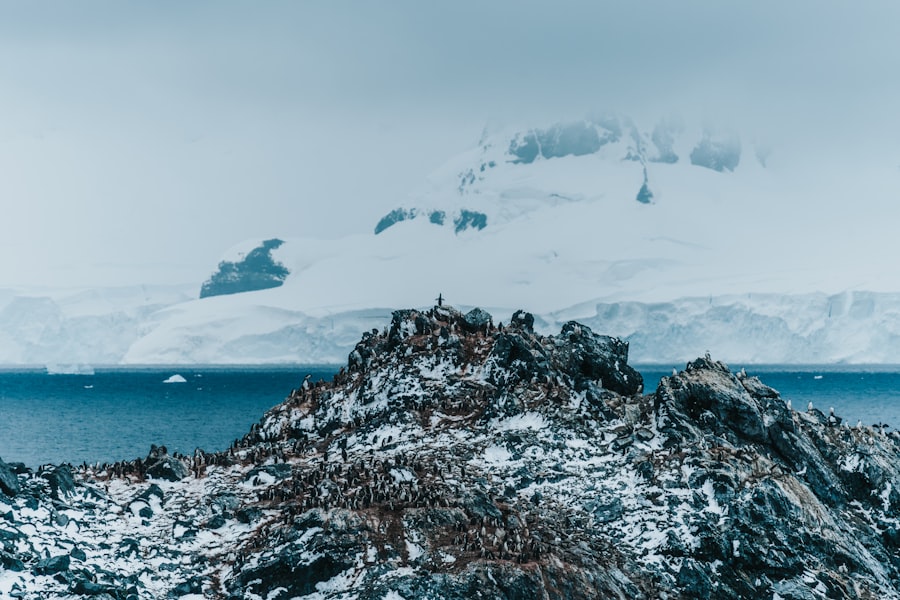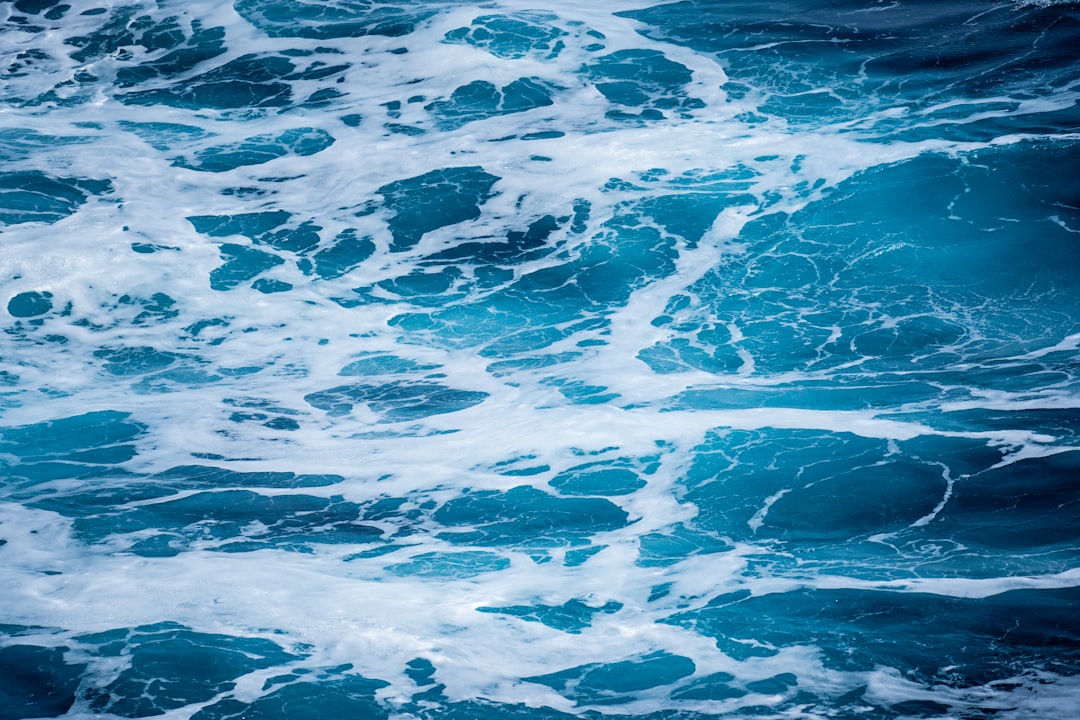The Drake Passage, a body of water situated between the southern tip of South America and Antarctica, is renowned for its tumultuous seas and breathtaking vistas. This narrow stretch of ocean, measuring approximately 600 kilometers (370 miles) wide, serves as a critical conduit for maritime traffic between the Atlantic and Pacific Oceans. Named after the English explorer Sir Francis Drake, who navigated these waters in the late 16th century, the passage has become a focal point for adventurers, researchers, and wildlife enthusiasts alike.
Its unique geographical position not only makes it a vital route for shipping but also a gateway to the pristine landscapes of Antarctica. The allure of the Drake Passage lies not only in its historical significance but also in the challenges it presents. The unpredictable weather patterns and strong currents can create a formidable environment for even the most seasoned mariners.
Despite these challenges, the passage offers an unparalleled opportunity to witness the raw beauty of nature and the diverse marine life that inhabits its waters. For those willing to brave its depths, the Drake Passage promises an unforgettable journey filled with adventure and discovery.
Key Takeaways
- The Drake Passage is a treacherous body of water located between the southern tip of South America and the northern tip of Antarctica.
- Understanding the challenges of the Drake Passage is crucial for a safe and successful crossing, as it is known for its unpredictable weather and rough seas.
- Choosing the right time to cross the Drake Passage is essential, with the austral summer months of November to March being the most favorable for smoother sailing conditions.
- Packing essentials for the journey include warm and waterproof clothing, sturdy footwear, and seasickness medication.
- Safety precautions and emergency procedures should be carefully followed, as the Drake Passage presents potential risks such as extreme weather and rough seas.
Understanding the Challenges of the Drake Passage
Crossing the Drake Passage is often described as one of the most challenging maritime experiences due to its notorious reputation for rough seas. The convergence of the Atlantic and Pacific Oceans creates a unique set of conditions that can lead to sudden storms and high waves. Sailors and travelers alike must be prepared for unpredictable weather changes that can occur within minutes.
The passage is known for its strong currents, which can reach speeds of up to 10 knots, further complicating navigation and increasing the potential for seasickness among passengers. Moreover, the isolation of the Drake Passage adds another layer of complexity to any journey through its waters. With limited access to immediate assistance, travelers must be self-sufficient and well-prepared for emergencies.
The remoteness of the area means that communication can be sporadic, making it essential for those crossing to have a solid understanding of their vessel’s capabilities and the necessary safety protocols. This combination of natural challenges and logistical considerations makes crossing the Drake Passage a formidable yet rewarding endeavor.
Choosing the Right Time to Cross the Drake Passage

Timing is crucial when planning a crossing of the Drake Passage. The best window for navigation typically falls between late November and early March, coinciding with the Southern Hemisphere’s summer months. During this period, weather conditions are generally more favorable, with calmer seas and milder temperatures.
Travelers who embark on their journey during these months are more likely to experience smoother sailing and clearer skies, enhancing their overall experience. However, even during the summer months, conditions can be unpredictable. It is essential for travelers to stay informed about weather forecasts and sea conditions leading up to their departure.
Some adventurers may choose to cross during shoulder seasons in late spring or early autumn, but they should be prepared for potentially rougher seas and colder temperatures. Ultimately, selecting the right time to cross the Drake Passage requires careful consideration of both personal preferences and environmental factors.
Packing Essentials for the Journey
| Item | Quantity | Description |
|---|---|---|
| Passport | 1 | Valid for at least 6 months |
| Clothing | Varies | Weather-appropriate and versatile |
| Toiletries | 1 set | Toothbrush, toothpaste, shampoo, etc. |
| Travel Adapter | 1 | For electronic devices |
| Medications | As needed | Prescription and over-the-counter |
Preparing for a journey across the Drake Passage involves careful packing to ensure comfort and safety throughout the trip. Essential items include waterproof clothing, sturdy footwear, and layers to accommodate fluctuating temperatures. A high-quality waterproof jacket is particularly important, as conditions can change rapidly, and staying dry is crucial for maintaining warmth.
Additionally, travelers should consider packing thermal undergarments and insulated gloves to protect against the chill of ocean breezes. Beyond clothing, travelers should also bring along personal items such as sunscreen, sunglasses, and a good camera to capture the stunning scenery. Binoculars are highly recommended for wildlife watching, as many species can be spotted from the deck of a vessel.
Furthermore, it is wise to pack any necessary medications, including seasickness remedies, as well as snacks and hydration supplies to keep energy levels up during long stretches at sea. Thoughtful packing can significantly enhance the overall experience of crossing this remarkable passage.
Safety Precautions and Emergency Procedures
Safety should always be a top priority when navigating the Drake Passage. Travelers must familiarize themselves with their vessel’s safety features and emergency procedures before setting sail. This includes understanding how to use life jackets, lifeboats, and other safety equipment on board.
Crew members are typically well-trained in emergency protocols, but passengers should also take an active role in ensuring their own safety by participating in safety drills and asking questions if anything is unclear. In addition to understanding emergency procedures, travelers should also be aware of potential hazards associated with crossing the Drake Passage. This includes recognizing signs of severe weather and knowing when to seek shelter on board.
Communication devices such as satellite phones or emergency beacons can provide an added layer of security in case of unforeseen circumstances. By being proactive about safety measures, travelers can enjoy their journey with greater peace of mind.
Wildlife Encounters in the Drake Passage

One of the most captivating aspects of crossing the Drake Passage is the opportunity to encounter a diverse array of wildlife. The waters are teeming with marine life, including various species of whales, seals, and seabirds that thrive in this rich ecosystem. Travelers may have the chance to spot majestic humpback whales breaching or playful orcas swimming alongside their vessel.
The sighting of these magnificent creatures often leaves a lasting impression on those fortunate enough to witness them. In addition to marine mammals, seabirds such as albatrosses and petrels are commonly seen soaring above the waves. These birds are known for their impressive wingspans and remarkable ability to glide over long distances without flapping their wings frequently.
Birdwatchers will find themselves captivated by the sheer variety of species that inhabit this region. The chance to observe wildlife in its natural habitat adds an enriching dimension to any journey through the Drake Passage.
Navigational Techniques for Crossing the Drake Passage
Successfully navigating the Drake Passage requires a combination of skillful seamanship and an understanding of local conditions. Experienced captains often rely on advanced navigational tools such as GPS systems and radar to chart their course through these challenging waters. However, traditional techniques such as celestial navigation may also play a role in ensuring safe passage.
Knowledge of tides, currents, and weather patterns is essential for making informed decisions while at sea. Additionally, understanding how to read nautical charts is crucial for avoiding hazards such as submerged rocks or shallow areas that could pose risks to vessels. Mariners must also be adept at adjusting their routes based on real-time weather updates and sea conditions.
This adaptability is key when traversing an area known for its unpredictable nature. By employing a combination of modern technology and traditional navigation skills, sailors can enhance their chances of a successful crossing.
Tips for Managing Seasickness
Seasickness is a common concern for many travelers embarking on a journey across the Drake Passage. The combination of rolling waves and unpredictable weather can lead to discomfort for even seasoned sailors. To mitigate these effects, it is advisable for travelers to take preventive measures before setting sail.
Over-the-counter medications such as antihistamines or prescription remedies can help alleviate symptoms if taken prior to departure. In addition to medication, there are several natural remedies that may provide relief from seasickness. Ginger tea or ginger candies are popular choices known for their soothing properties.
Staying hydrated and consuming light meals can also help maintain comfort during rough seas. Finding a stable spot on deck where one can focus on the horizon may further reduce feelings of nausea. By being proactive about managing seasickness, travelers can enjoy their journey through the Drake Passage more fully.
The Unique Beauty of the Drake Passage
The Drake Passage is not only known for its challenges but also for its stunning natural beauty. The dramatic landscapes surrounding this body of water feature rugged coastlines, towering icebergs, and expansive vistas that captivate all who traverse its waters. The interplay between light and water creates mesmerizing scenes that change throughout the day, offering countless opportunities for photography enthusiasts to capture breathtaking moments.
As vessels navigate through this remarkable passage, travelers are often treated to views of snow-capped mountains rising majestically from icy shores. The contrast between deep blue waters and stark white ice creates a visual spectacle that is both awe-inspiring and humbling. Whether witnessing a sunset casting golden hues across the waves or observing ice formations glistening in sunlight, each moment spent in this extraordinary environment leaves an indelible mark on those fortunate enough to experience it.
Historical Significance of the Drake Passage
The historical significance of the Drake Passage cannot be overstated; it has played a pivotal role in maritime exploration since its discovery by European navigators in the 16th century. Sir Francis Drake’s expedition through these waters marked one of the first recorded crossings, paving the way for future explorers seeking new trade routes and territories. The passage became synonymous with adventure and discovery as explorers ventured into uncharted territories.
Throughout history, many notable figures have traversed these waters in pursuit of knowledge or conquest. The passage has served as a vital route for whalers, sealers, and researchers studying Antarctica’s unique ecosystems. Today, it continues to attract adventurers eager to follow in the footsteps of those who came before them while contributing to ongoing scientific research aimed at understanding climate change and its impact on polar regions.
Making the Most of Your Journey through the Drake Passage
To truly make the most of a journey through the Drake Passage, travelers should embrace both preparation and spontaneity. Engaging with fellow passengers and crew members can enhance the experience by fostering camaraderie among those sharing this adventure together. Participating in onboard lectures or workshops about marine life or navigation techniques can deepen one’s appreciation for this remarkable environment.
Additionally, taking time to reflect on personal experiences while at sea can lead to profound insights about nature’s power and beauty. Whether it’s journaling about encounters with wildlife or simply soaking in breathtaking views from deck chairs under starlit skies, each moment spent in this extraordinary passage offers opportunities for growth and connection with both nature and fellow adventurers. By approaching their journey with an open heart and mind, travelers can create lasting memories that will resonate long after they have crossed back into calmer waters.
For those interested in learning more about the geographical and historical significance of this notorious stretch of water, a related article can be found on MyGeoQuest. This article delves into the unique features of the Drake Passage and offers insights into the experiences of those who have successfully crossed it. To explore this fascinating topic further, you can visit the article by clicking on this
